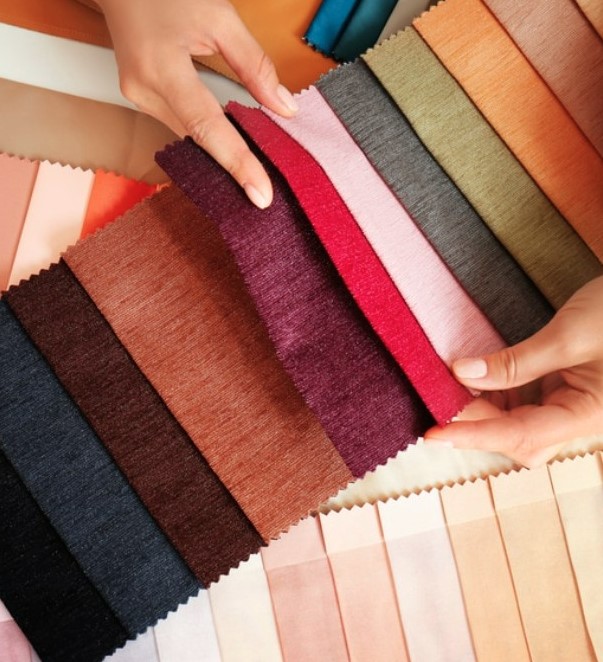
DARE TO BE DIFFERENT
Fabric Sourcing for Lingerie: How to Find the Perfect Material for Your Brand
Attention lingerie start-ups and entrepreneurs! Are you stressed about sourcing the perfect fabrics for your brand? Don’t worry, we’ve got you covered. Our step-by-step guide will walk you through everything you need to know about fabric sourcing for lingerie, from understanding necessary details to simplified steps to finding the right suppliers for different types of fabric options. With our expert tips and tricks, you’ll be able to save time, money, and headaches during production, and take your lingerie brand to the next level. So, let’s get started!


KNOW YOUR FABRICS
Before you start fabrics sourcing, it’s important to have a basic understanding of the different types of fabrics available:
- Cotton: Soft, breathable, and comfortable. Good for everyday wear.
- Silk: Luxurious, smooth, and lightweight. Great for special occasions.
- Lace: Delicate and intricate, perfect for adding a touch of elegance to your designs.
- Satin: Smooth and shiny, can add a touch of glamour to your products.
- Mesh: Lightweight and breathable, can add a sexy and sheer effect.
TYPES OF FABRICS
When it comes to fabric sourcing, there are several types of fabric available to choose from:
- In-Stock Fabrics: In-stock fabrics are ready to buy and available immediately with low MOQs, but customization options may be limited.
- Deadstock Fabrics: Those are leftover or rejected fabrics that may be available in limited quantities and may not have consistent quality.
- Greige Fabrics: They are raw fabric that is unbleached and undyed, allowing for customization options but with large minimums and longer lead times.

UNDERSTANDING FABRIC SOURCING TERMS
Knowing fabric sourcing terms is essential when sourcing fabrics for your lingerie brand. Here are some essential terms from the subject point of view:
- End Use: Determine what the fabric will be used for.
- Content: Understand what the fabric is made of. Knowing fabric content is important because it affects the fabric’s properties, such as breathability, durability, and texture.
- Fabric Weight: This is often represented by how many grams per square meter (GSM) a fabric weighs. While you don’t need to calculate this, it’s good to know what it means.
- Fabric Construction: This is how the fabric is made, such as knit or woven.
- Special Finishes: Determine if the fabric needs any special treatments, such as waterproofing, antibacterial properties, or a distressed look.
- Minimum Order Quantity (MOQ): The MOQ, which can differ for the sample and bulk orders, indicates the minimum number of yards that must be purchased. Knowing the MOQ is important when planning your budget and ordering process.
WHERE TO SOURCE FABRICS
Here are some of the most common places to find fabrics:
- Fabric Fairs and Trade Shows: These events are a great way to meet fabric suppliers, see their products, and negotiate prices.
- Online Fabric Stores: There are many online stores that specialize in lingerie fabrics. Some popular options include Alibaba, Spoonflower, and Mood Fabrics.
- Local Fabric Stores: Check out your local fabric stores to see what they have available. You may be able to find unique fabrics that you can’t find online.
Many stakeholders make the mistake of sourcing fabric from retail stores, which can be marked up by at least 2x. This can lead to higher costs for your lingerie brand.
SIMPLIFIED STEPS TO SOURCE FABRICS FOR YOUR LINGERIE BRAND
To help simplify things, here is a simplified step-by-step process you can follow:
- Research and contact potential suppliers that offer the fabrics you need.
- Send reference swatches of fabrics you like to the suppliers you’ve chosen.
- In response, the supplier will send you similar swatches for the fabrics they carry.
- Choose the fabrics you like from the options presented and order a small quantity of sample yardage.
- Use the sample yardage to create prototypes for testing using a tech pack.
- Once you’re satisfied with the wear and wash of your prototypes, order a larger quantity of bulk yardage for production.

While this is a simplified overview of the fabric sourcing process, it can be complex and require attention to detail. When sourcing fabrics, it’s important to take detailed notes on fabric details, supplier information, and swatch sources. Header cards or hangers typically provide this information, but it’s important to ask for missing details like weight, construction, and care instructions. Keep track of supplier, item number, price, MOQ, lead time, country of origin, and other pertinent details for your tech pack. Don’t hesitate to share your understanding with us!
